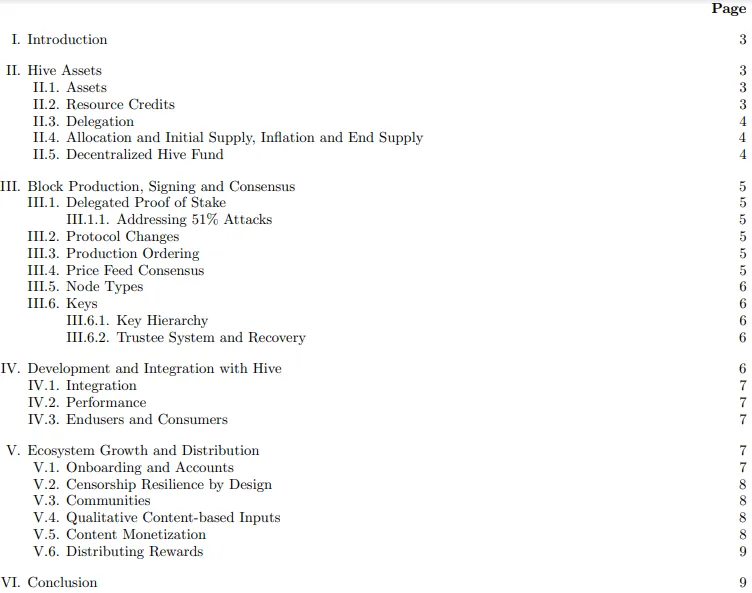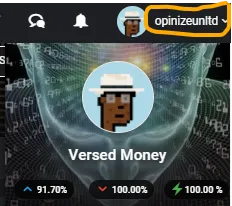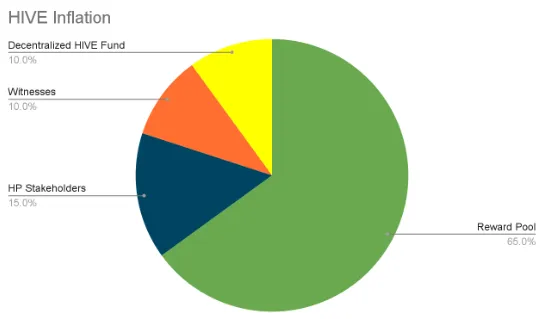It's been a while since I've seen content related to the (HIVE) whitepaper on-chain so I decided to chime in with a fresh resource post centered around the official authoritive guide for HIVE. Lately I've been doing a lot of onboarding so I find myself producing resources to help make new Hivers more comfortable with their transition.

Unfortunately, when it comes to onboarding there isn't much emphasis on getting newbies to read the whitepaper. I know we don't want to overload new users with too much information so I get it, but I feel there are some parts of the WP that can really help newcomers grasp what is happening overall in the ecosystem. Once you understand where the value is and where it derives from things makes a lot more sense.
To those familiar with blockchain fundamentals, the HIVE whitepaper, just 9 pages in length, is easy to digest but for those still learning the basics it can be a dense read. With that in mind, this guide will focus on the sections of it that are most pertinent to new users.
You can find the official link here, but in this post I'll give my "dumbed down" interpretation for users that are still learning the ropes. With that said, all HIVE users should read it front-to-back if they really want to understand all the moving parts and possibilities in the HIVE ecosystem.

II.1. Assets 📈
Value on the HIVE blockchain is represented by two digital assets:
HIVE - The primary or "base layer" token on HIVE. This is the most liquid asset in the ecosystem and can be traded on multiple crypto exchanges. Once staked, HIVE becomes HIVE Power (HP). HIVE power gives users more vote influence, more stake in overall HIVE governance, and more Resource Credits (RC) for transactions.
HIVE Backed Dollars (HBD) - HDB is the USD pegged stable coin here on HIVE. Historically, it has held its peg pretty well, especially in comparison to other "stable coins" in the market. Something else to note, all the huge spikes have been to the upside because there are plenty of safeguards in place to stop the asset from tanking.
II.2. Resource Credits 🔋
The Resource Credits system allows HIVE transactions to be fast and free. In summary, the more HIVE you have staked (remember HIVE Power) the more RC you have to make transactions. RC and voting power replenishes at a rate of 20% per day. This prevents abuse. If logged into PeakD, all you have to do is click your PFP in the top right and you will see (below, left to right) a drop-down menu that displays your UpVoting Power, DownVoting Power, and Resource Credits.

*There are plenty of other blockchains that boast "fast and free" but the caveat is these other projects don't have a fraction of the transaction volume that HIVE has.
II.3. Delegation ♋️
The delegation feature allows HIVE accounts to freely loan HIVE Power to other accounts. Delegated (loaned) HIVE Power grants the recipient Resource Credits and Voting Power respective to the amount of HIVE Power that has been delegated.
II.4. Allocation and Initial Supply, Inflation and End Supply ⚖️
HIVE's initial token supply was a direct result of a hardfork and snapshot taken from the STEEM blockchain after a hostile attack back in March 2020. All STEEM wallet balances at that time, excluding the wallets attached to the attack of course, were migrated to the new HIVE blockchain.
HIVE tokens are minted through inflation. The inflation rate, currently projected to be around 8-10%, decreases approximately 0.5% per year until it reaches 0.95%. The inflation (minted tokens) is allocated as follows:
- 65% to the Reward Pool to reward content creators and curators
- 15% goes to HIVE Power stakeholders
- 10% goes to HIVE witnesses (node operators) for block signing
- 10% goes to the Decentralized HIVE Fund (DHF)

III.6. Keys 🔐
When you create a HIVE account you are given a password (not your keys). This password is used to generate your public and private key pairs. These key pairs are needed to validate transactions in the ecosystem.
III.6.1. Key Hierarchy
The key hierarchy isn't arbitrary so here's a screenshot:

V. Ecosystem & Growth 🆙
Section V, about 2 pages in length, covers important matters such as Onboarding & Accounts, Censorship, Communities, and Content Monetization among other things, and should be read in its entirety. This will make users more comfortable with actually interacting with the blockchain and engaging with others. Some points from this section that stick out the most to me are:
- The account creation process is decentralized and offers complete control to the creator. You may assign a trustee account for recovery if desired.
- There are multiple account creation options, free and paid, each differing in level of privacy and ease-of-use.
- Content produced on HIVE is stamped on the blockchain creating "post-finality" once it is confirmed. This by default creates a censorship resilitent environment.
- Communities make it possible for all content creators to find a home within the ecosystem or create there own.
- Posts on the HIVE blockchain can earn rewards for a 7 day period. Once the 7 days are up rewards are distributed.
- 50% of post rewards are distributed to content creators and the other 50% are split between the content curators (accounts that upvoted the post).
Hope this post was helpful. Drop a comment if you have any questions or insight.
